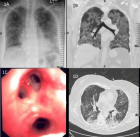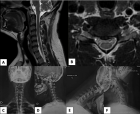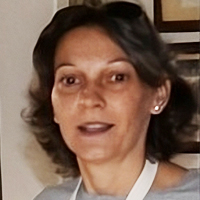Abstract
Review Article
Beginnings of bariatric and metabolic surgery in Spain
Aniceto Baltasar*
Published: 27 December, 2019 | Volume 3 - Issue 2 | Pages: 082-090
Bariatric Surgery (BS) from the Greek bari = weight and iatrein = cure) treats obesity and began in Spain in 1973. Its greatest development occurs after the founding of SECO (Spanish Society of Obesity Surgery) in 1997. The purpose of this work is to reflect the changes that have occurred in these 22 years.
Obesity is a multifactorial epidemic ailment of environmental origin, affecting subjects from all countries, and whose origins are not in the stomach or intestine. It represents a unique case of surgery to operate healthy organs, which are not the cause of the disease and do not improve after the operation.
Henryson [1] initiated Obesity Surgery (OS) in 1952. Kremen & Linner [2] and Varco & Buchwald in Minneapolis, MN teams began the malabsorptive intestinal diversion (ID) in 1954. Payne [3] and Scott [4] developed these ID techniques in the 1960s leaving only 14-4 inches (35-10 cm) as an absorptive zone and those were abandoned in the 1970s because of their serious metabolic (malnutrition) and hepatic (liver failure) complications.
Buchwald [5] initiated the ID of the last third of the intestine for hypercholesterinemia (POSCH) and showed its protective role at 25 years in the development of atherosclerosis. Now it has also been abandoned, not because of lack of effectiveness, but because of the development of nystatin in the medical control of cholesterol. Dr. Henry Buchwald remains active 67 years later, and in 2012 Barcelona was appointed as Honorary Member of the Spanish Society of Obesity Surgery (SECO) and he will participate in Madrid-IFSO 2019. Baltasar [6] published in 1991 the only three ID in Spain for hypercholesterinemia.
First spanish experience
Prof. Sebastián García Díaz of Seville carried out the 1st Scott-type Jejune-ileal diversion (JID) in the Virgen Macarena Hospital on 11.19.1973. He began bariatric surgery in Spain with 12 cases [7-10] and then published 20 more, the 1st work in English by a Spanish author [7] in the World Journal of Surgery in 1981. For this 2nd work he received the award by the Seville Hospital of the Five Sores in 1979 (Figure 1). His work went unnoticed for 40 years until we rescued them in 2013 [11].
Read Full Article HTML DOI: 10.29328/journal.ascr.1001042 Cite this Article Read Full Article PDF
Keywords:
Morbid obesity; Bariatric surgery; SECO
References
- Henrikson V. Kantunn farmsresektion forsvaras som terapi mot fett sot? Nordisk Medicin. 1952; 47: 744.
- Kremen AJ, Linner JH, Nelson CH. An experimental evaluation of the nutritional importance of proximal and Distal small intestine. Ann Surg. 1954; 140: 439-448. PubMed: https://www.ncbi.nlm.nih.gov/pubmed/13198079
- Payne JH, de Wind L, Schab CE, Kern WH. Surgical treatment of morbid obesity. Sixteen years of experience. Arch Surg. 1973; 106: 431-437. PubMed: https://www.ncbi.nlm.nih.gov/pubmed/4696715
- Scott HW, Law DH, Sandstead H, Lanier VC Jr, Younger RK. Jejunoileal shunt in surgical treatment of morbid obesity. Ann Surg. 1971; 171: 770-781. PubMed: https://www.ncbi.nlm.nih.gov/pubmed/5445664
- Buchwald H, Williams SE, Matts JP, Nguyen PA, Boen JR. Overall mortality in the program of the surgical control of the hyperlipidemias (POSCH). J Am Coll Surg. 2002; 195: 327–331.
- Baltasar A, Marcote E, Bou R, Bengochea M, Arlandis F. Exclusión ileal parcial en la hiper colesterinemia. Apropósito de tres operaciones. Cir Esp. 1991; 6: 4475-4478.
- García Díaz S. Indicaciones del tratamiento quirúrgico en la obesidad mórbida. Rev Quir Española. 1975; 2: 165-172.
- García Díaz S, Pera C, Loscertales J. Trabajos originales. Estado actual del tratamiento de cirugía de la obesidad. Rev Esp Enf del Ap Digestivo. 1977; 51: 1-25.
- García Díaz S, Pera C, Loscertales J. Avances en cirugía. Barcelona Editorial Salvat. 1979; 209-224.
- García Díaz S, García G. Medical and surgical indications for treatment of morbid obesity. World J Surg. 1981; 5: 795-799. PubMed: https://www.ncbi.nlm.nih.gov/pubmed/7342473
- Baltasar A. Domínguez-Adame E. Inicios de la cirugía bariátrica y metabólica en España. Cir Esp. 2013; 91: 407-416.
- Buchwald H, Rucker R. The History of Metabolic Surgery for Morbid Obesity and a Commentary. World J Surg. 1981; 5: 781-787. PubMed: https://www.ncbi.nlm.nih.gov/pubmed/7043911
- Mason EE, Ito C. Gastric bypass in obesity. Surg Clin North Am. 1967; 47: 1345-1351. PubMed: https://www.ncbi.nlm.nih.gov/pubmed/6073761
- Capella R, Capella J, Mandac H. Vertical Banded Gastroplasty-Gastric Bypass: preliminary report. Obes Surg. 1991; 1: 389-395. PubMed: https://www.ncbi.nlm.nih.gov/pubmed/10775940
- Álvarez-Cordero R, Aragon V. Post-operative Complications in a Series of Gastric Bypass Patients. Obes Surg. 1992; 2: 87-89. PubMed: https://www.ncbi.nlm.nih.gov/pubmed/10765170
- Fobi M. Why silastic ring vertical banded gastric bypass for treatment of obesity? Obes Surg. 1991; 1: 423-426. PubMed: https://www.ncbi.nlm.nih.gov/pubmed/10775946
- Baltasar A, Del Río J, Bengochea A. Bypass gástrico en la obesidad mórbida. Revista clínica Española. 1980; 157: 395-399.
- Vara López R. Tratamiento quirúrgico de la obesidad. Real Academia de Medicina. Anales XCI. 1974.
- De la Cruz Caro F. Mesa redonda sobre obesidad. Mayo. 1975.
- Sitges Creus A, Laporte E. Tratamiento quirúrgico de la obesidad masiva. Práctica quirúrgica. 1982.
- Scopinaro N, Gianetta E, Civalleri D, Bonalumi U, Bachi V. Biliopancreatic bypass for obesity: II. Initial experience in man. Br J Surg. 1979; 66: 619-620. PubMed: https://www.ncbi.nlm.nih.gov/pubmed/497645
- Scopinaro N, Gianetta E, Civalleri D, Bonalumi U, Bachi V. Two years of clinical experience with bilio-pancreatic bypass for obesity. Am J Clin Nutr. 1980; 33: 506-514. PubMed: https://www.ncbi.nlm.nih.gov/pubmed/7355830
- Scopinaro N, Gianetta E, Civalleri D, Bonalumi U, Friedman D, et al. Partial and total biliopancreatic bypass in the surgical treatment of obesity. Int J Obes. 1981; 5: 421-429. PubMed: https://www.ncbi.nlm.nih.gov/pubmed/7309327
- Scopinaro N. Why the Operation I Prefer is Biliopancreatic Diversion (BPD). Obes Surg. 1991; 1: 307-309. PubMed: https://www.ncbi.nlm.nih.gov/pubmed/10775931
- Sánchez C, Larrad N. Analysis of Weight Loss with the Biliopancreatic Diversion of Larrad: Absolute Failures or Relative Successes? Obes Surg. 2002; 12: 249-252. PubMed: https://www.ncbi.nlm.nih.gov/pubmed/11975222
- Larrad A, Sánchez C. Quality indicators in bariatric surgery and criteria for long-term success. Cir Esp. 2004; 75: 301-304.
- Larrad A, Sánchez C, Cuadros P, Ramos García I, Moreno Esteban B, et al. Course of Metabolic Syndrome following the Biliopancreatic Diversion of Larrad. Obes Surg. 2007; 17: 202-210. PubMed: https://www.ncbi.nlm.nih.gov/pubmed/15527630
- Larrad A, Sánchez C, Cuadros P, Lesmes IB, Esteban BM. Short-, Mid- and Long-Term Results of Larrad Biliopancreatic Diversion. Obes Surg. 2007; 17: 202-210. PubMed: https://www.ncbi.nlm.nih.gov/pubmed/17476873
- Elía M, Ariba’s D, Gracia J, Artigas C, Bernadó AJ, et al. Results of biliopancreatic diversion after five years. Obes Surg. 2004; 14: 766-772. PubMed: https://www.ncbi.nlm.nih.gov/pubmed/15318979
- Gracia J, Martínez M, Aguilella V, Elia M, Royo P. Postoperative morbidity of biliopancreatic diversion depending on common limb length. Obes Surg. 2007; 117: 1306-1311. PubMed: https://www.ncbi.nlm.nih.gov/pubmed/18098399
- Aguilella V, Royo P, Jiménez A, Aguilella V, Royo P, et al. Obesity surgery results depending on technique performed: long-term outcome. Obes Surg. 2009; 19: 432-438. PubMed: https://www.ncbi.nlm.nih.gov/pubmed/19002740
- Gracia JA, Elía M, Aguilella V, Ramirez JM, Martínez J, et al: Metabolic syndrome after bariatric surgery. Results depending on the technique performed. Obes Surg. 2011; 21: 179-185. PubMed: https://www.ncbi.nlm.nih.gov/pubmed/21080097
- Domínguez A, Olmedo F, Ingelmo A, Gómez M, Escalante C. Bypass biliopancreático. Cir Esp. 2004; 75: 251-256.
- Palomar R, Fernández G, Domínguez A, López-Deogracias M, Olmedo F, et al. Effects of Weight Loss after Biliopancreatic Diversion on Metabolism and Cardiovascular Profile. Obes Surg. 2005; 15: 794-798. PubMed: https://www.ncbi.nlm.nih.gov/pubmed/15978149
- Mason E. Vertical banded gastroplasty for obesity. Arch Surg. 1982; 117: 191-194.
- Baltasar A. “JJ Soriano más moral que el alcoyano”. RTVE Vivir cada día.
- Laporte E, Badosa F, Masdevall C. La gastro plastia para el tratamiento de la obesidad. Cir Esp. 1985; 38: 621-625.
- Baltasar A. Modified vertical gastroplasty. Technique with vertical division and serosal patch. Acta Chir Scand. 1989; 155: 107-112. PubMed: https://www.ncbi.nlm.nih.gov/pubmed/2741612
- McLean LD, Rhode BM, Sampalis J, Forse RA. Results of the surgical treatment of obesity. Am J Surg. 1993; 165: 155-162. PubMed: https://www.ncbi.nlm.nih.gov/pubmed/8418692
- Andreo L, Lasierra R, Baltasar A. Evaluación radiológica de la gastroplastia vertical anillada. Radiología. 1988; 30: 303-308.
- Alastrué A, Rull M, Casas D. Gastroplastia vertical anillada. Experiencia de un grupo multidisciplinario en 65 pacientes. Metodología y técnica quirúrgica. Resultados antropométricos. Cir Esp. 1991; 50: 50-58.
- Alastrué A, Formiguera J, Rull M, Casas D, Escudero LE, et al. Cirugía bariátrica: gastroplastia vertical anillada. Obesidad mórbida y super obesidad. Resultados antropométricos. Complicaciones técnicas y reintervenciones a largo plazo. Rev Endocrinol. 1992; 38: 365-375.
- Arribas D, Martínez M, Elía M, Diago VA. Vertical banded gastroplasty: Is it a durable operation for morbid obesity? Obes Surg. 2004; 14: 536-538. PubMed: https://www.ncbi.nlm.nih.gov/pubmed/15130234
- Baltasar A, Tomás, Marcote. Cirugía bariátrica. Experiencia con 100 pacientes operados. Cir Esp. 1991; 50: 271-275.
- Baltasar A, Bou R, Del Río J. Cirugía bariátrica: resultados a largo plazo de la gastroplastia vertical anillada. Una esperanza frustrada? Cir Esp. 1997; 62: 175-179.
- Baltasar A, Bou R, Arlandis F, Martínez R, Serra C, et al. Vertical banded gastroplasty at more than five years. Obes Surg. 1998; 8: 29-34. PubMed: https://www.ncbi.nlm.nih.gov/pubmed/9562483
- Belachew M, Lagrard TH, Defrebreuren M. Laparoscopic adjustable silicone gastric banding in the treatment of morbid obesity. Surg Endosc. 1994; 8: 1354-1356. PubMed: https://www.ncbi.nlm.nih.gov/pubmed/7831615
- Belachew M, Legrand M, Vincent V, Deffechereux T, Jourdan JL, et al. Laparoscopic Placement of Adjustable Silicone Gastric Band in the Treatment of Morbid Obesity: How to Do It. Modern Surgery: Technical Innovations. Obes Surg. 1995; 5: 66-70. PubMed: https://www.ncbi.nlm.nih.gov/pubmed/10733796
- Favretti F, Cadiere GB, Segato G, Bruyns G, De Marchi F, et al. Laparoscopic Adjustable Silicone Gastric Banding: Technique and Results. Obes Surg. 1995; 5: 364-371. PubMed: https://www.ncbi.nlm.nih.gov/pubmed/10733827
- Carbajo MA, Martín JC, Blanco J. Banda ajustable por laparoscopia (Lapband) en el tratamiento de la obesidad grave. Experiencia preliminar Cir Esp. 1998; 63: 185-188.
- Alastrué A, Rull M, Casas D. Evaluación de dos técnicas restrictivas en cirugía bariátrica. Gastroplastia vertical anillada (GVA) vs bandeleta hinchable (Lapband). Valoración a los dos años. Cir Esp. 1996; 60: 181-187.
- Scott HW. A tribute to Edward E Mason. The 1st Annual Edward E. Mason Founders lecture. Obes Surg. 1991; 1: 13-19.
- Blommers T. The ASBS first nine years. Obes Surg. 1992; 2: 115-117
- Mason E, Amaral J, Cowan G, Deitel E, Gleysteen JJ, et al. Standards for reporting results. Obes Surg. 1994; 4: 56-65. PubMed: https://www.ncbi.nlm.nih.gov/pubmed/10742766
- Wittgrove A, Clark W, Tremblay L. Laparoscopic gastric bypass. Roux-en-Y. Preliminary report. Obes Surg. 2004; 4: 353-357. PubMed: https://www.ncbi.nlm.nih.gov/pubmed/10742801
- Wittgrove A, Clark W. Laparoscopic gastric bypass. Roux-en Y. Experience with 27 cases with 3-18 months follow up. Obes Surg. 2006; 6: 54-57. PubMed: https://www.ncbi.nlm.nih.gov/pubmed/10731251
- Wittgrove A, Clark W, Schubert K. Laparoscopic gastric bypass. Roux-en Y. Technique and results in 75 patients with 3-30 months follow up. Obes Surg. 2006; 6: 500-504. PubMed: https://www.ncbi.nlm.nih.gov/pubmed/10729899
- Wittgrove A. Chapter 21: Laparoscopic gastric bypass. Circular stapler technique. In: Obesity Surgery: Principles and Practice. Pitombo C, Jones KB, Higa KD, Pareja JC). Albany, New York: McGraw Hill Medical. 2007; 221-224.
- Baltasar A, Bou R, Miró J, Serra C. Bypass gástrico por laparoscopia. Cir Esp. 2000; 67: 556-559.
- Baltasar A, Bou R, Bengochea M. Lap Roux-Y gastric bypass. V-18. Obes Surg. 1998; 8: 393.
- Serra C, Baltasar A, Bou R, Miró J, Cipagauta LA. Internal hernias and gastric perforation after laparoscopic gastric bypass. Obes Surg. 1999; 9: 546-549. PubMed: https://www.ncbi.nlm.nih.gov/pubmed/10638480
- Higa K, Boone K, Ho T. Complications of the Laparoscopic Roux-en-Y Gastric Bypass: 1,040 Patients - What Have We Learned? Obes Surg. 2000; 10: 509-513. PubMed: https://www.ncbi.nlm.nih.gov/pubmed/11175957
- Baltasar A. Obesidad y cirugía. Cómo dejar de ser obeso. Libro de Editorial Arán. 2000.
- Martínez C. Martínez G. Bypass gástrico laparoscópico. Vitoria. 2001.
- De la Cruz F, la Cruz JL. Bypass Gástrico por Laparoscopia. Laparoscopic Gastric Bypass. Obes Surg. 2006; 16: 112.
- Hess DS, Hess DW. Biliopancreatic diversion with a duodenal switch. Obes Surg. 1988; 8: 267-282.
- Marceau P, Biron S, Bourque RA, Potvin M, Hould FS, et al. Biliopancreatic Diversion with a New Type of Gastrectomy. Obes Surg. 1993; 3: 29-35. PubMed: https://www.ncbi.nlm.nih.gov/pubmed/10757900
- Baltasar M, Bou R, Cipagauta LA, Marcote E, Herrera GR, et al. Hybrid bariatric surgery: Biliopancreatic diversion and duodenal switch. Obes Surg. 1995; 5: 419-423. PubMed: https://www.ncbi.nlm.nih.gov/pubmed/10733838
- Ren CJ, Patterson E, Gagner M. Early results of laparoscopic biliopancreatic diversion with duodenal switch: a case series of 40 consecutive patients. Obes Surg. 2000; 10: 514-523. PubMed: https://www.ncbi.nlm.nih.gov/pubmed/11175958
- Baltasar A, Bou R, Miró J. Avances en técnica quirúrgica. Cruce duodenal por laparoscopia en el tratamiento de la obesidad mórbida: técnica y estudio preliminar. Cir Esp. 2001; 70: 102-104.
- Aniceto Baltasar, Nieves Pérez, Rafael Bou, Marcelo Bengochea, Carlos Serra. A switch to the Duodenal Switch. Glob J Obes Diabetes Metab Syndr. 2019; 6: 001-009.
- Serra C, Pérez N, Bou R, Baltasar A. Sliding Self-Locking First Stitch and Aberdeen Knots in Suture Reinforcement with Omentoplasty of the Laparoscopic Gastric Sleeve Staple line. Obes Surg. 2014; 24: 1739-1740. PubMed: https://www.ncbi.nlm.nih.gov/pubmed/25085221
- Baltasar A, Bou R, Serra R, Bengochea M, Pérez N. Use of self-locking knots in running intestinal bariatric sutures. Glob Surg. 2015; 2: 100-101.
- Recomendaciones de la SECO para la práctica de la cirugía bariátrica (Declaración de Salamanca). Cir Esp. 2004; 75: 312-314.
- Baltasar A, Serra C, Pérez N, Bou R, Bengochea M, et al. Laparoscopic sleeve gastrectomy: A multi-purpose operation. Obes Surg. 2005; 15: 1124-1128. PubMed: https://www.ncbi.nlm.nih.gov/pubmed/16197783
- Ahmad SS, Ahmad SS, Kohl S. The Hundred Most Cited Articles in Bariatric Surgery. Obes Surg. 2015; 25: 900-909. PubMed: https://www.ncbi.nlm.nih.gov/pubmed/25720513
- Angrisani L, Santonicola A, Iovino P, Vitiello A, Higa K, et al. IFSO Worldwide Survey 2016: Primary, Endoluminal, and Revisional Procedures. Obes Surg. 2018; 28: 3783-3794. PubMed: https://www.ncbi.nlm.nih.gov/pubmed/30121858
- Rutledge R. The Mini-Gastric Bypass: Experience with the First 1,274 Cases. Obes Surg. 2001; 11: 276-280. PubMed: https://www.ncbi.nlm.nih.gov/pubmed/11433900
- Carbajo M, García M, Toledano M, Osorio D, García-Lanza C, et al. One anastomosis gastric bypass by laparoscopy: results of the first 209 patients. Obes Surg. 2004; 15: 398-404. PubMed: https://www.ncbi.nlm.nih.gov/pubmed/15826476
- Sánchez-Pernaute A, Rubio Herrera MA, Pérez-Aguirre E, García Pérez JC, Cabrerizo L, et al. Proximal Duodenal–Ileal End-to-Side Bypass with Sleeve Gastrectomy: Proposed Technique. Obes Surg. 2007; 17: 1614-1618. PubMed: https://www.ncbi.nlm.nih.gov/pubmed/18040751
- Baltasar A. Historical note: First diabetes metabolic operation in Spain. Integr Obesity Diabetes. 2015.
- Resa J, Solano J, Fatás A, Blas JL, Monzón A, et al. Laparoscopic Biliopancreatic Diversion: Technical Aspects and Results of our Protocol. Obes Surg. 2004; 14: 329-333. PubMed: https://www.ncbi.nlm.nih.gov/pubmed/15072652
- Resa Bienzobas J, Lagos Lizan J, Pérez Zapata AI. Laparoscopic Gastro ileal Bypass with Single Anastomosis: Analysis of the First 1512 Patients. Laparoscopic Gastroileal Bypass with Single Anastomosis. Obes Surg. 2019; 1976-1981.
- Alhambra M, Molina M, Prior M, Manzano-García G, Calañas-Continente A, et al. Variations in diabetes remission rates after bariatric surgery in Spanish adults according to the use of different diagnostic criteria for diabetes. BMC Endocr Disord. 2017; 17: 51. PubMed: https://www.ncbi.nlm.nih.gov/pubmed/28810850
- Vidal J, Ibarzabal A, Romero F, Delgado S, Momblán D, et al. Type 2 diabetes mellitus and the metabolic syndrome following sleeve gastrectomy in severely obese subjects. Obes Surg. 2008; 18: 1077-1082. PubMed: https://www.ncbi.nlm.nih.gov/pubmed/18521701
- Vilarrasa N, Rubio MA, Miñambres I, Flores L, Caixàs A, et al. Long-term outcomes in patients with morbid obesity and Type 1 Diabetes Undergoing Bariatric Surgery. Obes Surg. 2017; 27: 856-863. PubMed: https://www.ncbi.nlm.nih.gov/pubmed/27709487
- García M, Tinahones FG, Cohen R. McGraw-Hill Interamericana de España S.L.1ª ed., 1ª imp.
- Cruz M, Rubio MA, Calle L. Remisión de diabetes mellitus tipo 2 a largo plazo tras cirugía bariátrica Tesis. Hospital Clínico. 2017.
- Torres A, Sánchez A, Rubio MA. Metabolic surgery for obesity a critical account. Endocrinol Nutr. 2013; 60: 36-38. PubMed: https://www.ncbi.nlm.nih.gov/pubmed/24490225
- Baltasar A, Serra C, Bou R, Bengochea M, Andreo L. Sleeve Gastrectomy in a 10-year-old Child. Obes Surg. 2008; 18: 733-736. PubMed: https://www.ncbi.nlm.nih.gov/pubmed/18401672
- Baltasar A. Nine years follow up of the 1st Adolescent Bariatric Surgery in Spain Nine years follow up of the 1st Adolescent Bariatric Surgery in Spain. J Obes. 2017; 3: 026.
- Carbajo M, Vázquez R, Aparicio R, Luque de Leon E, Jimenez JM, et al. 12-year old adolescent with super morbid obesity, treated with laparoscopic one anastomosis gastric bypass (LOAGB/BAGUA): A case report after 5-year follow-up. Nutr Hosp. 2015; 31: 2327-2332. PubMed: https://www.ncbi.nlm.nih.gov/pubmed/25929410
- Carbajo MA, Gonzalez-Ramirez G, Jimenez JM, Luque-de-Leon E, Ortiz-de-Solorzano J, et al. A 5-Year Follow-up in Children and Adolescents Undergoing One-Anastomosis Gastric Bypass (OAGB) at a European IFSO Excellence Center (EAC- BS).Obes Surg. 2019; 29: 2739-2744. PubMed: https://www.ncbi.nlm.nih.gov/pubmed/31049849
- Vilallonga R, Moreno JM, Yeste D, Sánchez Santos R, Casanueva Freijo F, et al.: Initial Approach to Childhood Obesity in Spain. A Multisociety Expert Panel Assessment. Obes Surg. 2017; 27: 997-1006. PubMed: https://www.ncbi.nlm.nih.gov/pubmed/27752806
- Vilallonga R, Fort JM, Caubet E, González O, Armengol M. Robotic Sleeve Gastrectomy Versus Laparoscopic Sleeve Gastrectomy: a Comparative Study with 200 Patients. Obes Surg. 2013; 23: 1501-1507. PubMed: https://www.ncbi.nlm.nih.gov/pubmed/23897216
- Morales S. Bypass gástrico por puerto único: detalles técnicos. De un nuevo abordaje. Cir Es. 2015; 90: 100-106.
- Morales-Conde S, Peeters A, Meyer YM, Antoniou SA, Del Agua IA, et al. European association for endoscopic surgery (EAES) consensus statement on single-incision endoscopic surgery. Surg Endosc. 2019; 33: 996-1019. PubMed: https://www.ncbi.nlm.nih.gov/pubmed/30771069
- Shikora S Torres A: Baltasar. Biography. Obes Surg. 2016; 26: 477-478.
- Torres AJ. Biography. Obes Surg. 2017; 27: 2383-2384.
- Baltasar A. Rafael Capella biography. Obes Surg. 2017; 27: 1129.
- Baltasar A, Luque-de-León E., Carbajo MA. Carbajo biography. Obes Surg. 2018; 28: 889-891.
- Baltasar A, Bou R, Bengochea M, Serra C. Malnutrición calórico-proteica. Tres tipos de alargamiento de asa común. BMI-Latina. 2011; 5: 96-97.
- Baltasar A, Bou R, Bengochea M. Fatal perforations in laparoscopic bowel lengthening operations for malnutrition. Surg Obes Relat Dis. 2010; 6: 572-574. PubMed: https://www.ncbi.nlm.nih.gov/pubmed/20176511
- Bueno J, Pérez N, Serra C. Fistula pancreato-cutánea secundaria a pancreatitis postoperatoria tras cruce duodenal laparoscópico. Cir Esp. 2004; 76: 184-186.
- Serra C, Baltasar A, Andreo L, Pérez N, Bou R, et al. Treatment of Gastric Leaks with Coated Self-expanding Stents after Sleeve Gastrectomy. Obes Surg. 2007; 17: 866-872. PubMed: https://www.ncbi.nlm.nih.gov/pubmed/17894143
- Serra C, Baltasar A, Pérez N, Bou R, Bengochea M. Total Gastrectomy for Complications of the Duodenal Switch, with Reversal. Obes Surg. 2006; 16: 1082-1086. PubMed: https://www.ncbi.nlm.nih.gov/pubmed/16901364
- Castillo J, Fábrega F, Escalante C, Sanjuan JC, Herrera L, et al. Liver Transplantation in a Case of Steatohepatitis and Subacute Hepatic Failure after Biliopancreatic Diversion for Morbid Obesity. Obes Surg. 2001; 11: 640-642. PubMed: https://www.ncbi.nlm.nih.gov/pubmed/11594111
- Baltasar A. Liver failure and transplantation after duodenal switch. Surg Obes Relat Dis. 2014; 10: c93-c96. PubMed: https://www.ncbi.nlm.nih.gov/pubmed/24916757
- Mayo Ossorio MA, Pacheco García JM, Gomar DP, del Carmen Bazán Hinojo M, Vílchez López FJ, et al. Caso clínico Fallo hepático fulminante a largo plazo en pacientes sometidos a bypass gástrico por obesidad mórbida. Nutr Hosp. 2015; 32: 430-434.
- Baltasar A, Bou R, Serra C. Grapado de la sonda en gastrectomía vertical laparoscópica. BMI-latina. 2013; 3: 4-7.
- Baltasar A, Bou R, Bengochea M. Intubación Difícil y Traqueotomía en el obeso mórbido Baltasar A. BMI. 2013; 3: 4.
- Baltasar A. Prevenir y Deshacer entuertos en cirugía. Journal of negative or non-positive results. 2019; 4: 252-264.
- Duncan T, Tuggle K, Larry Hobson L. PL-107. Feasibility of laparoscopic gastric bypass performed on an outpatient basis. Surg Obes Relat Dis. 2011; 7: 339-354.
Figures:
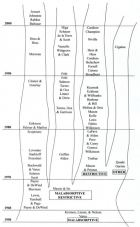
Figure 1

Figure 2

Figure 3

Figure 4

Figure 5
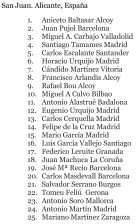
Figure 6

Figure 7
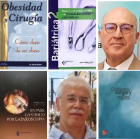
Figure 8

Figure 9
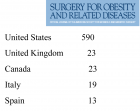
Figure 10

Figure 11

Figure 12

Figure 13

Figure 14
Similar Articles
-
Bouveret Syndrome in an Elderly FemaleZvi H. Perry*, Udit Gibor,Shahar Atias,Solly Mizrahi,Alex Rosental, Boris Kirshtein. Bouveret Syndrome in an Elderly Female . . 2017 doi: 10.29328/journal.ascr.1001002; 1: 012-015
-
Intestinal obstruction complicated by large Morgagni herniaMartín Arnau B*,Medrano Caviedes R,Rofin Serra S, Caballero Mestres F,Trias Folch M. Intestinal obstruction complicated by large Morgagni hernia . . 2017 doi: 10.29328/journal.ascr.1001003; 1: 016-020
-
Dieulafoy’s Lesion related massive Intraoperative Gastrointestinal Bleeding during single Anastomosis Gastric Bypass necessitating total Gastrectomy: A Case ReportAshraf Imam,Khalayleh Harbi*,Miller Rafael, Khoury Deeb,Buyeviz Victor,Guy Pines,Sapojnikov Shimon. Dieulafoy’s Lesion related massive Intraoperative Gastrointestinal Bleeding during single Anastomosis Gastric Bypass necessitating total Gastrectomy: A Case Report . . 2017 doi: 10.29328/journal.ascr.1001008; 1: 051-055
-
Thirty days post-operative complications after Sleeve Gastrectomy, Gastric Bypass and Mini Gastric Bypass/one Anastomosis Gastric Bypass. Analysis of the Italian Society for Bariatric Surgery and Metabolic Disorders (S.I.C.OB.) database of 7 years time frameMaurizio De Luca*,Nicola Clemente,Cristiana Visentin,Natale Pellicanò,Cesare Lunardi,Alberto Sartori,Gianni Segato,Luigi Angrisani,Marcello Lucchese5,Nicola Di Lorenzo. Thirty days post-operative complications after Sleeve Gastrectomy, Gastric Bypass and Mini Gastric Bypass/one Anastomosis Gastric Bypass. Analysis of the Italian Society for Bariatric Surgery and Metabolic Disorders (S.I.C.OB.) database of 7 years time frame. . 2017 doi: 10.29328/journal.ascr.1001011; 1: 062-071
-
Safety and effectiveness of laparoscopic management in 210 patients with erosion of adjustable Gastric bandingRamiro Galvez-Valdovinos*,Juan francisco Funes-Rodriguez,Ernesto Marin Y Santillan,Gustavo López Ambriz,Juan Francisco Ramirez-Arias. Safety and effectiveness of laparoscopic management in 210 patients with erosion of adjustable Gastric banding. . 2017 doi: 10.29328/journal.ascr.1001013; 1: 077-082
-
The Essential Role of Esophagogastroduodenoscopy Prior to bariatric surgeryReza Ebrahimi, Mohammad Kermansaravi, Abdolreza Pazouki*. The Essential Role of Esophagogastroduodenoscopy Prior to bariatric surgery. . 2018 doi: 10.29328/journal.ascr.1001016; 2: 013-014
-
Laparoscopic Cholecystectomy: Challenges faced by beginners our perspectiveKunal Chowdhary,Gurinder Kaur,Kapil Sindhu,Muzzafar Zaman*,Aliya Shah,Rohit Dang,Ashish Kumar,Jose John Maiakal,Ashutosh Bawa. Laparoscopic Cholecystectomy: Challenges faced by beginners our perspective. . 2018 doi: 10.29328/journal.ascr.1001018; 2: 018-024
-
Biliary reflux gastritis after Mini Gastric Bypass: The effect of Bilirubin levelMohamed Lasheen, Mohamed Mahfouz,Tamer Salama*,Hossam El-Deen M Salem. Biliary reflux gastritis after Mini Gastric Bypass: The effect of Bilirubin level. . 2019 doi: 10.29328/journal.ascr.1001028; 3: 027-031
-
Hot cholecystectomyEsam Aboutaleb*. Hot cholecystectomy. . 2019 doi: 10.29328/journal.ascr.1001040; 3: 077-077
-
Beginnings of bariatric and metabolic surgery in SpainAniceto Baltasar*. Beginnings of bariatric and metabolic surgery in Spain. . 2019 doi: 10.29328/journal.ascr.1001042; 3: 082-090
Recently Viewed
-
Metastatic Brain Melanoma: A Rare Case with Review of LiteratureNeha Singh,Gaurav Raj,Akshay Kumar,Deepak Kumar Singh,Shivansh Dixit,Kaustubh Gupta*. Metastatic Brain Melanoma: A Rare Case with Review of Literature. J Radiol Oncol. 2025: doi: 10.29328/journal.jro.1001080; 9: 050-053
-
Validation of Prognostic Scores for Attempted Vaginal Delivery in Scar UterusMouiman Soukaina*,Mourran Oumaima,Etber Amina,Zeraidi Najia,Slaoui Aziz,Baydada Aziz. Validation of Prognostic Scores for Attempted Vaginal Delivery in Scar Uterus. Clin J Obstet Gynecol. 2025: doi: 10.29328/journal.cjog.1001185; 8: 023-029
-
Scientific Analysis of Eucharistic Miracles: Importance of a Standardization in EvaluationKelly Kearse*,Frank Ligaj. Scientific Analysis of Eucharistic Miracles: Importance of a Standardization in Evaluation. J Forensic Sci Res. 2024: doi: 10.29328/journal.jfsr.1001068; 8: 078-088
-
A study of coagulation profile in patients with cancer in a tertiary care hospitalGaurav Khichariya,Manjula K*,Subhashish Das,Kalyani R. A study of coagulation profile in patients with cancer in a tertiary care hospital. J Hematol Clin Res. 2021: doi: 10.29328/journal.jhcr.1001015; 5: 001-003
-
Additional Gold Recovery from Tailing Waste By Ion Exchange ResinsAshrapov UT*, Malikov Sh R, Erdanov MN, Mirzaev BB. Additional Gold Recovery from Tailing Waste By Ion Exchange Resins. Int J Phys Res Appl. 2024: doi: 10.29328/journal.ijpra.1001098; 7: 132-138
Most Viewed
-
Evaluation of Biostimulants Based on Recovered Protein Hydrolysates from Animal By-products as Plant Growth EnhancersH Pérez-Aguilar*, M Lacruz-Asaro, F Arán-Ais. Evaluation of Biostimulants Based on Recovered Protein Hydrolysates from Animal By-products as Plant Growth Enhancers. J Plant Sci Phytopathol. 2023 doi: 10.29328/journal.jpsp.1001104; 7: 042-047
-
Sinonasal Myxoma Extending into the Orbit in a 4-Year Old: A Case PresentationJulian A Purrinos*, Ramzi Younis. Sinonasal Myxoma Extending into the Orbit in a 4-Year Old: A Case Presentation. Arch Case Rep. 2024 doi: 10.29328/journal.acr.1001099; 8: 075-077
-
Feasibility study of magnetic sensing for detecting single-neuron action potentialsDenis Tonini,Kai Wu,Renata Saha,Jian-Ping Wang*. Feasibility study of magnetic sensing for detecting single-neuron action potentials. Ann Biomed Sci Eng. 2022 doi: 10.29328/journal.abse.1001018; 6: 019-029
-
Pediatric Dysgerminoma: Unveiling a Rare Ovarian TumorFaten Limaiem*, Khalil Saffar, Ahmed Halouani. Pediatric Dysgerminoma: Unveiling a Rare Ovarian Tumor. Arch Case Rep. 2024 doi: 10.29328/journal.acr.1001087; 8: 010-013
-
Physical activity can change the physiological and psychological circumstances during COVID-19 pandemic: A narrative reviewKhashayar Maroufi*. Physical activity can change the physiological and psychological circumstances during COVID-19 pandemic: A narrative review. J Sports Med Ther. 2021 doi: 10.29328/journal.jsmt.1001051; 6: 001-007

HSPI: We're glad you're here. Please click "create a new Query" if you are a new visitor to our website and need further information from us.
If you are already a member of our network and need to keep track of any developments regarding a question you have already submitted, click "take me to my Query."










